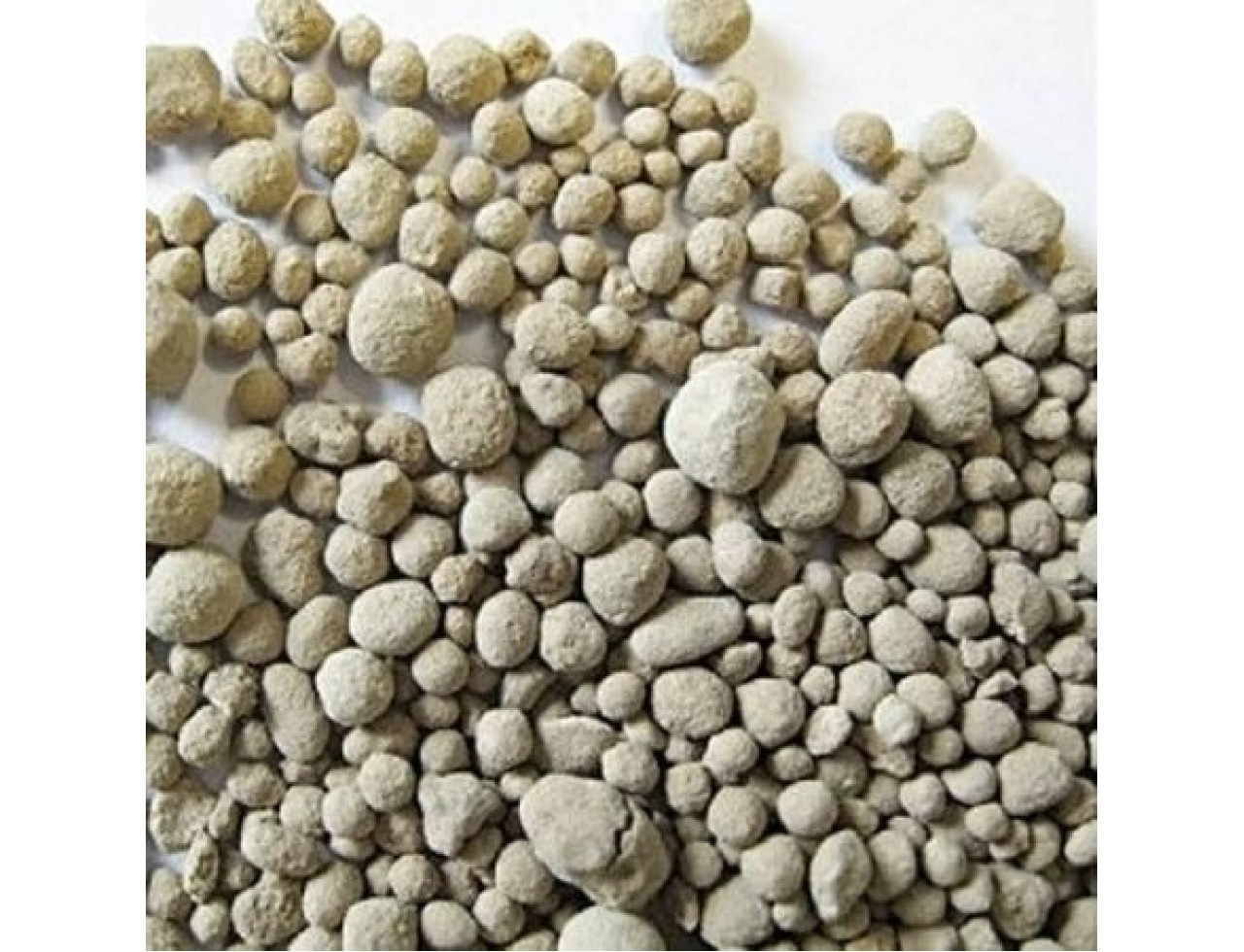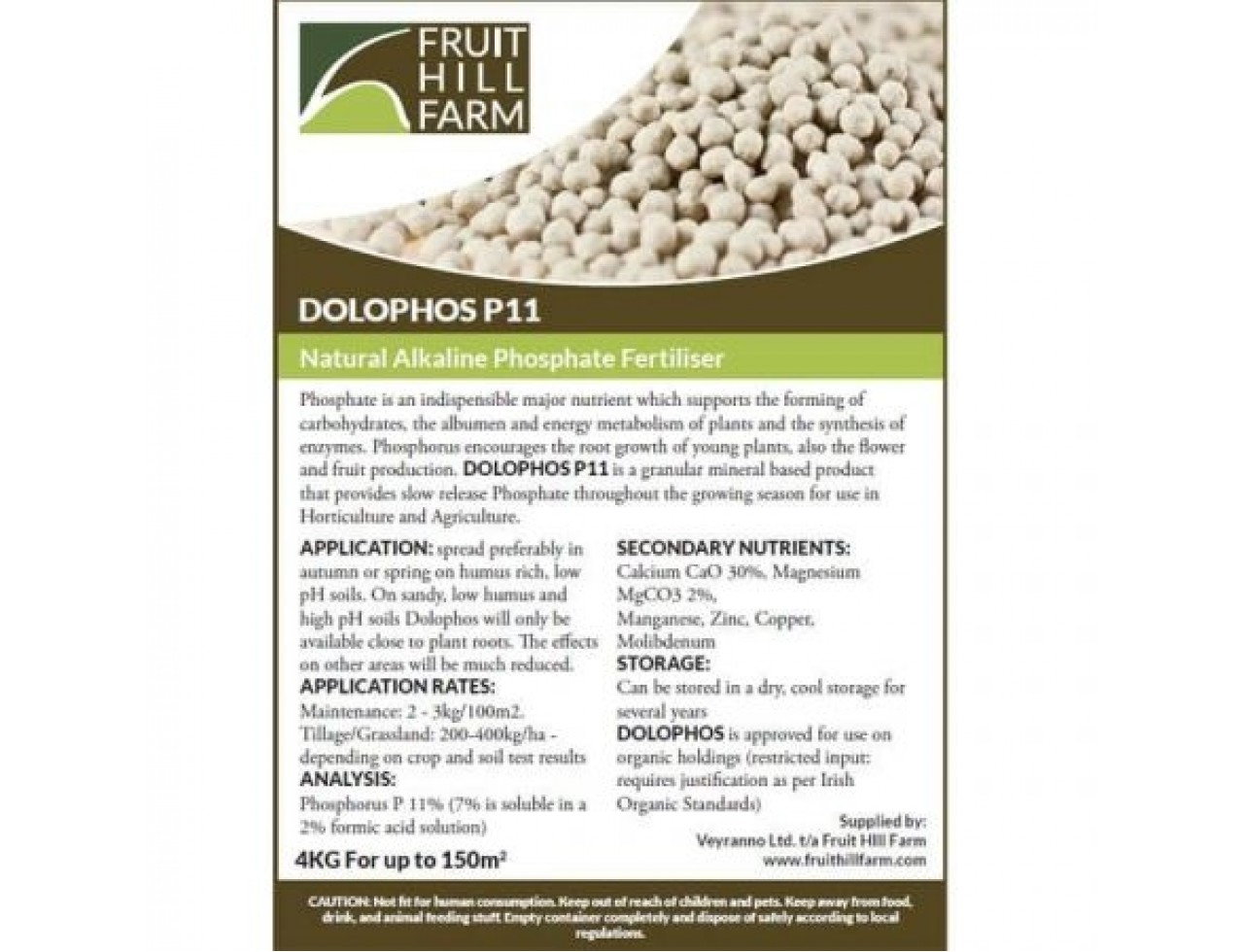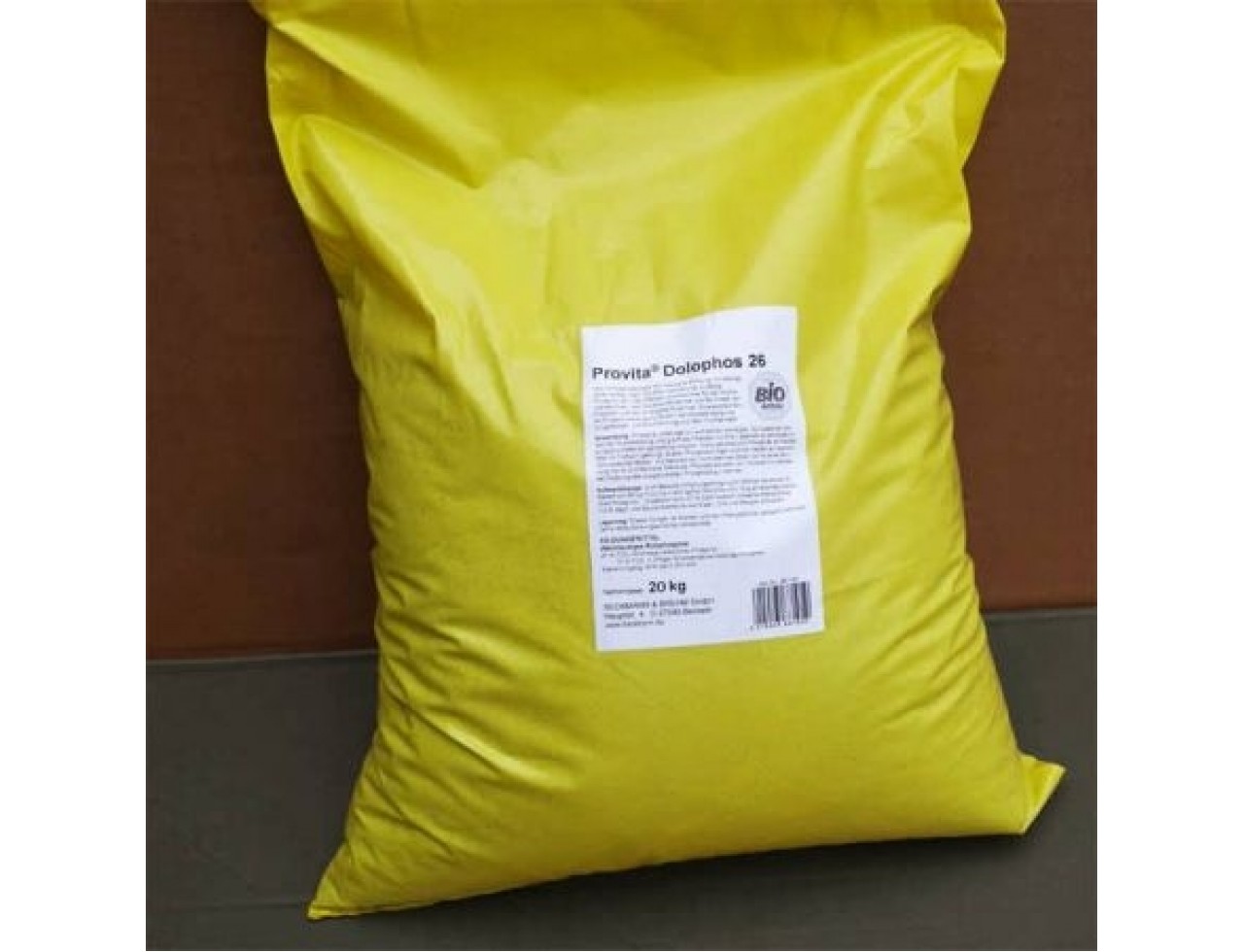Rock Phosphate Fertilizer 11%P
€11
Category:
Fertilizers
Description:
Dolophos is granulated rock phosphate containing 11% Phosphorus. Approved for use in organic farming. Call for tonne prices. More details below.
Add to Favorites
Full Description
Dolophos is granulated rock phosphate containing 11% Phosphorus. Approved for use in organic farming. Call for tonne prices. More details below.
DOLOPHOS Phosphorus Fertiliser
This is a granular mineral based product that provides slow release Phosphate throughout the growing season for use in Horticulture, Tillage and Grassland. It also contains important secondary nutrients including 30% Calcium, 2% Magnesium (MgCO3) as well as Manganese, Zinc, Copper and Molybdenum. Phosphate is vital for root growth and plant establishment. Due to its gradual release, Dolophos matches crop uptake. Approved for use on organic holdings subject to approval from your certification body.
Symptoms of Phosphorus Deficiency
Poor growth and root development.
Leaves that turn blue/green and become stiff.
Fruits small and acidic tasting.
Poor yield of fruit.
Phosphorus deficiency may be confused with nitrogen deficiency.
Particularly susceptible crops are Carrots, Lettuce, Spinach, Apples, Currants and Gooseberries.
Application rate:
Maintenance application approx. 2-3kg/100m².
Tillage 200-400kg/ha.
Grassland 200-300kg/ha.
Higher application rates depend on the scale of the deficiency which can be determined by a soil test.
Dolophos is soluble in a 2% formic acid solution.
Phosphorus (P) is the key nutrient for optimising N fixation by Rhizobium bacteria in legume root nodules, so it is essential that P levels are maintained above minimum levels to ensure sufficient N fixation.
The main mineral source of P is rock phosphate, which is ground to sufficient fineness to allow it to be biologically degraded into soluble forms and is called ground rock phosphate (GRP). It typically contains 11% P which is released over three years with a third released in each year, so it will provide only a small amount of P if applied to a crop at sowing. The rate of release is also governed by soil pH with efficacy being best below pH 6.5. In more alkaline situations organic standards permit calcined aluminium phosphate rock. Legumes acidify the soil around their roots which assists them in the absorption of P even if soil pH is at the higher end of the recommended level.
Ground rock phosphate can also contain other minerals which can aid soil fertility. It contains about 35% Ca which has a small liming effect on soils. This is in contrast with superphosphates (not permitted in organic farming), which have an acidifying effect that has to be counteracted by liming. (Teagasc, 2016).
DOLOPHOS Phosphorus Fertiliser
This is a granular mineral based product that provides slow release Phosphate throughout the growing season for use in Horticulture, Tillage and Grassland. It also contains important secondary nutrients including 30% Calcium, 2% Magnesium (MgCO3) as well as Manganese, Zinc, Copper and Molybdenum. Phosphate is vital for root growth and plant establishment. Due to its gradual release, Dolophos matches crop uptake. Approved for use on organic holdings subject to approval from your certification body.
Symptoms of Phosphorus Deficiency
Poor growth and root development.
Leaves that turn blue/green and become stiff.
Fruits small and acidic tasting.
Poor yield of fruit.
Phosphorus deficiency may be confused with nitrogen deficiency.
Particularly susceptible crops are Carrots, Lettuce, Spinach, Apples, Currants and Gooseberries.
Application rate:
Maintenance application approx. 2-3kg/100m².
Tillage 200-400kg/ha.
Grassland 200-300kg/ha.
Higher application rates depend on the scale of the deficiency which can be determined by a soil test.
Dolophos is soluble in a 2% formic acid solution.
Phosphorus (P) is the key nutrient for optimising N fixation by Rhizobium bacteria in legume root nodules, so it is essential that P levels are maintained above minimum levels to ensure sufficient N fixation.
The main mineral source of P is rock phosphate, which is ground to sufficient fineness to allow it to be biologically degraded into soluble forms and is called ground rock phosphate (GRP). It typically contains 11% P which is released over three years with a third released in each year, so it will provide only a small amount of P if applied to a crop at sowing. The rate of release is also governed by soil pH with efficacy being best below pH 6.5. In more alkaline situations organic standards permit calcined aluminium phosphate rock. Legumes acidify the soil around their roots which assists them in the absorption of P even if soil pH is at the higher end of the recommended level.
Ground rock phosphate can also contain other minerals which can aid soil fertility. It contains about 35% Ca which has a small liming effect on soils. This is in contrast with superphosphates (not permitted in organic farming), which have an acidifying effect that has to be counteracted by liming. (Teagasc, 2016).
| Seller | Dealer |
| Offered | New |
| Equipment for | Solid |



